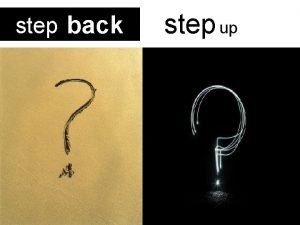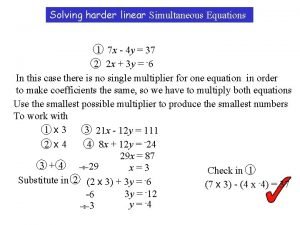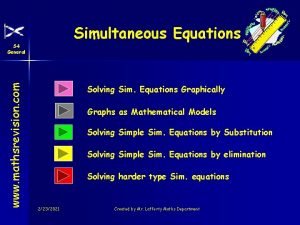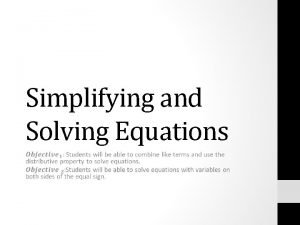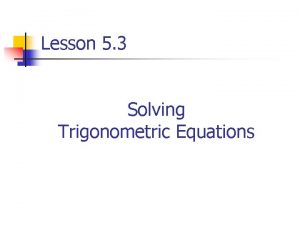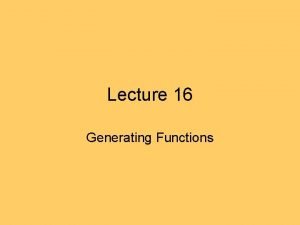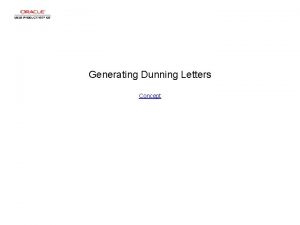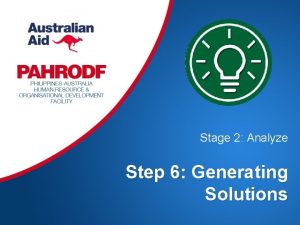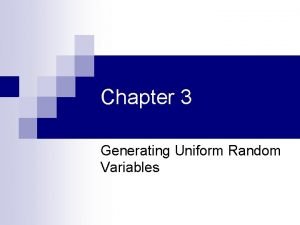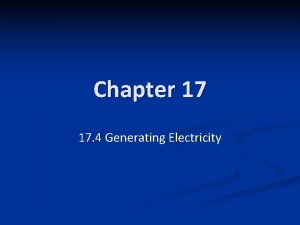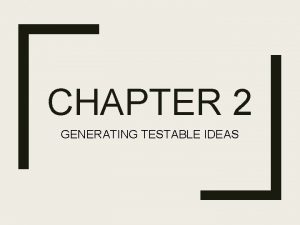Chapter 22 Design Step 2 Generating Alternative Solutions

















- Slides: 17

Chapter 22 Design Step #2: Generating Alternative Solutions 4 th Edition

What’s Covered in This Chapter Brainstorming within teaming Concept sketching Functional Decomposition Promising concepts pull together Exploring Engineering

Brainstorming This is what a team does best The sum of your combined brains exceeds that of the same number in series! Never criticize another team member’s ideas You need all the help you can get! Exploring Engineering

Concept Sketching Can be hand-sketched or computer generated. No dimensions at this time. Remember, this is not a detailed drawing. Label parts and main features. If the drawing is hand-sketched, handwritten labeling is acceptable. Provide multiple views and close-up views if needed to describe how the design works. Exploring Engineering

Concept Sketching – Hand Drawn Exploring Engineering

Concept Sketching – Computer Drawn Flying Blimp Exploring Engineering

Class Team Building Exercise The Tube Remove a golf ball from a deep mailing tube Have available: String, duct tape, Scotch® tape, 8. 5”× 11” paper sheet, and scissors Exploring Engineering

The Tube Rules of Engagement 1. Limited to using the supplied materials. 2. Scissors can be used for manufacturing. 3. Everyone in the group can help in manufacturing, but only one person can extract the ball. 4. Students are not allowed to handle the materials until it is time to test. 5. Must manufacture the design shown on the concept drawing handed to the instructor. 6. Time limit of 3 minutes to manufacture concept and extract ball. 7. Cannot tip over the tube. 8. Cannot touch the outside of the tube with anything. 9. No forces can be applied to the inside of the tube in an effort to hold it vertical; accidental contact with the inside of the tube is okay as long as the tube does not tip over. 10. Violation of any of the preceding rules will lead to immediate disqualification. Exploring Engineering

The Tube Procedures 1. First allow the students 3 minutes to individually brainstorm (encourage them to draw quick sketches of each of their concepts). 2. Then, divide into teams of four students. 3. Allow teams 10 minutes to collect ideas, brainstorm as a team, select their best concept, and give a sketch of their best concept to the instructor. 4. Instructor should walk around during brainstorming to remind teams to (a) generate multiple solutions before selecting one and (b) try to involve everyone in the process. 5. Allow teams 2 minutes to assign responsibilities for manufacture and test. 6. One at a time, give each team 3 minutes to manufacture a concept and attempt to extract the golf ball. 7. The team with the shortest retrieval time wins. Exploring Engineering

How to Develop a Winning Design Use analogies from something with similarities that you know works Reverse engineer a similar product Literature Search (e. g. , the Patent Office, www. USPTO. gov/) Exploring Engineering

Functional Decomposition for Complex Systems Design Step 1: Break the problem down into constituent bits, e. g. , the Remote Controlled golf machine Exploring Engineering

Functional Decomposition for Complex Systems Step 2: Brainstorm alternative concepts for each function and assemble the results in a classification scheme Exploring Engineering

Functional Decomposition for Complex Systems Step 3: Then combine the best subfunctions Exploring Engineering

Functional Decomposition for Complex Systems Step 4: Sketch each of the most promising combinations and assemble them into a table Exploring Engineering

Functional Decomposition for Complex Systems The three promising total concepts here are Total Concept I = Helium + 2 Props + Pivot props + Sticky tape Total Concept II = Helium + Rotating turret + Vertical prop + Rake Total Concept III = Helium + Prop with rudder + String + Claw Exploring Engineering

Design Milestone - Generation of Alternatives Assignment 1. For the functional decomposition given by your instructor, brainstorm to determine at least five feasible alternatives for each subfunction and assemble the results in a classification scheme. 2. Form three promising design concepts by combining compatible subfunction alternatives from your classification scheme. 3. Firm up your three design concepts by sketching them up in the form of concept drawings. Functionality (i. e. , how it works) should be clearly indicated in the drawings through the use of labeling and text. Exploring Engineering

Design Milestone - Generation of Alternatives No design works without several layers of input It’s a team exercise! Discuss then draw your concepts Sketch initially by hand then by computer Breakdown problem by functional decomposition Make path through best items Present at least 3 alternates Exploring Engineering
 Step 1 step 2 step 3 step 4
Step 1 step 2 step 3 step 4 Generating alternative solutions
Generating alternative solutions Alternative methods for generating frequent itemsets
Alternative methods for generating frequent itemsets Chapter 15 musculoskeletal system practical
Chapter 15 musculoskeletal system practical Teeth disking
Teeth disking Creating a dinosaur sculpture
Creating a dinosaur sculpture Pbpa essay
Pbpa essay Persuasive essay sentence starters
Persuasive essay sentence starters Step back step up
Step back step up Solve
Solve Harder simultaneous equations
Harder simultaneous equations Simultaneous equations step by step
Simultaneous equations step by step Combine like terms equations
Combine like terms equations What food do plants make
What food do plants make Matlab particle filter example
Matlab particle filter example Oracle real application testing
Oracle real application testing Veritas bare metal restore
Veritas bare metal restore Trigonometric equations
Trigonometric equations








